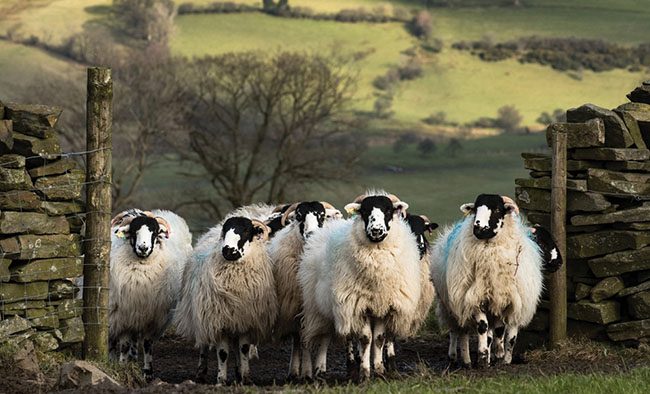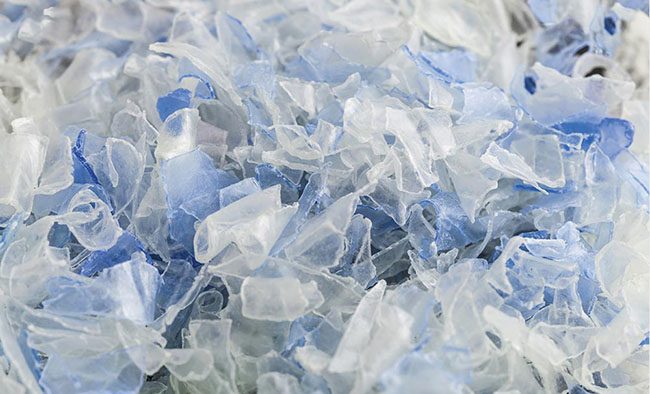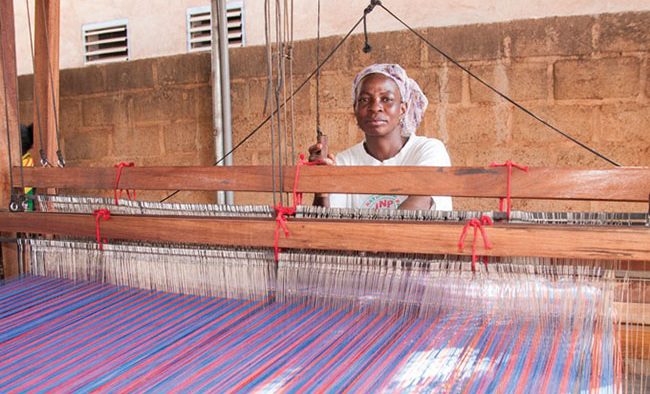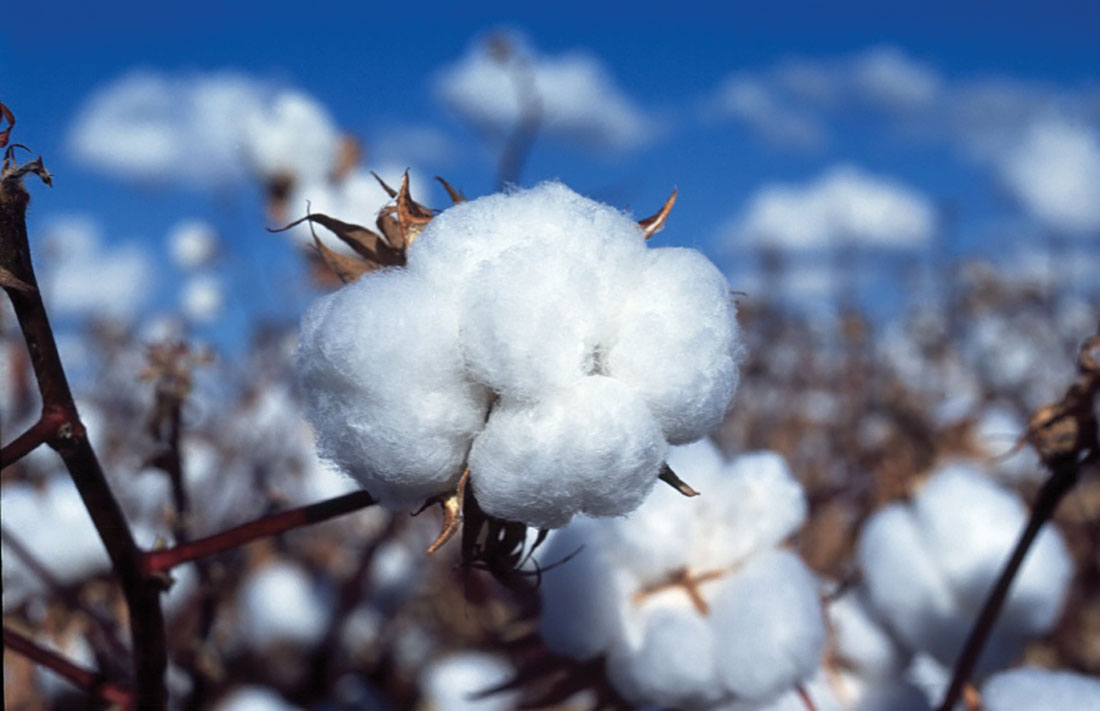It feels like synthetic fibers are under siege. The fabrics used to manufacture a major part of the world’s clothing have been shown to shed microfibers that, when laundered, end up polluting the marine environment. As much as 35 percent of microplastics in the world’s oceans are fibers from synthetic clothing – and this amount continues to increase.
All this would seem to point towards natural fibers making a comeback, but there are limitations on increased production. And are they any better than manmade fibers?
No escape from microplastic pollution
IMicroplastic particles – those less than 5 mm in diameter – including microfibers from synthetic clothing and other textiles, are now ubiquitous in aquatic and land-based ecosystems across the world.
It is estimated that up to 1.7 million tonnes of microfibers are released into the ocean every year, with new research by the UK’s University of Manchester finding the amount of microplastic particles in the world’s waterways is vastly greater than originally thought.
And without active intervention, the number of these particles is set to increase as consumption of plastics in general and manmade fibers in clothing in particular expands to meet the demand from a growing global population and rising regional incomes, especially in developing countries.
There is now significant evidence of the negative impacts on aquatic habitats and marine organisms from this pollution, while the full extent of the impact on human health has yet to be quantified, although it is widely acknowledged that microplastics can enter the body through the food chain and drinking water.

Fast fashion criticized
Synthetic fibers are derived from fossil fuels that, along with cellulosic fibers, require a wide range of chemicals in their manufacture and processing as well as water – around 20 percent of the world’s wastewater is said to come from the fashion and textile industry. And while most microfibers are removed from wastewater treatment plants, a significant amount is still released into the environment.
Choosing non-toxic clothing can be complicated – virtually all finished apparel products contain large quantities of chemical substances, such as dyes and bleach, not to mention various functional treatments, such as UV protection, insect repellency, wrinkle-free, waterproof, stain resistance, flame retardancy, and antibacterial.
Meanwhile, the global fast fashion industry has come under increasing criticism for selling cheap clothes that are designed only to be worn a few times and then discarded, mostly ending up as landfill.
Consumers now buy 60 percent more clothing than they did 15 years ago, and have doubled the rate at which they dispose of them. And much of this apparel is sewn in the sweatshops of developing countries, largely by lowly paid women working in poor conditions.
Synthetic success
Manmade fibers are broadly divided synthetic fibers, such as polyester, polyamide, acrylic and polypropylene, based on oil-based feedstocks, and cellulosic fibers, such as viscose and acetate, that are regenerated from wood pulp or other forms of cellulose.
Synthetic fibers in particular are now commonly used in all forms of textiles: clothing, household furnishings, and technical textiles. The success of synthetics is mainly down to cost. And unlike natural fibers largely grown and harvested by farmers, common synthetic fibers are mass produced from petrochemicals to uniform strengths, lengths and colors that can be easily customized to specific end-uses.

Recycled polyester
Speaking at the recent Techtextil exhibition in Frankfurt, Germany, Edmund Ingle, chief executive officer of Indorama Ventures subsidiary Wellman International, noted that while 55 percent of all polyethylene terephthalate (PET) bottles are currently recycled into polyester products, only 1 percent of all textiles produced worldwide are recycled.
Several fiber manufacturers are already marketing recycled polyester, and some retailers are now launching clothing ranges made from recycled fibers and setting up consumer recycling schemes.

Natural displacement
Natural fibers – fibers produced by plants and animals that can be spun into yarn or thread or braided into cords and ropes – have been utilized since the dawn of human civilization – the use of flax dates from around 10,000 BC, while jute and coir have also been cultivated since antiquity.
Fragments of cotton articles dated from 5000 BC have been excavated in Mexico and Pakistan, while silk production began in the 27th century BC, according to Chinese tradition. The oldest wool textile, found in Denmark, dates from 1500 BC, and the oldest wool carpet from Siberia dates from 500 BC.
However, natural fibers have been largely displaced by manmade fibers since the second half of the 20th century, particularly from the 1960s. In 2017, natural fiber production was estimated at 32 million tonnes, representing just 31 percent of total global fiber production of 103 million tonnes.
Of this total, cotton production amounted to 26 million tonnes with other natural fibers at six million tonnes, including as wool, mohair, cashmere, alpaca, angora, camel hair, silk, flax, hemp, jute, kenaf, sisal, abaca, coir, ramie, bamboo, coconut, pineapple leaf fiber, banana fiber – the list goes on.
Ethical clothing
There is now a growing consumer trend for more ethically and environmentally responsible clothing. Along with society’s concerns about disposable clothing and fast fashion, there is an argument for buying more sustainably, buying less often and buying apparel made from biodegradable fibers. Other discernible trends include more recycling and using products made from recycled fibers – as well as washing clothing less often.
A 2018 review by researchers in Australia and Norway into microplastic pollution from textiles recommended more use of natural, non-synthetic textiles, such as cotton and wool (although bear in mind the review was sponsored by the Australian wool and cotton industries).
“An effective strategy for consumers to reduce their contribution to microfiber pollution would be to choose garments made from natural fibers, which are biodegradable and do not contribute to the build-up of microplastics in the environment,” concluded Associate Professor Beverley Henry of the Queensland University of Technology.

Cotton conundrum
But are natural fibers as eco-friendly as they appear? The production of cotton, for example, is said to use more pesticides than any other area of agriculture, impacting ecosystems and causing harm to plants and animals.
Although grown on less than 3 percent of the world’s agricultural land, cotton consumes 16 percent of all the insecticides and 7 percent of all herbicides used globally.
If cotton is cultivated intensively, it also requires large amounts of water for irrigation, which can cause soil salinization, particularly in dry areas, and a degradation of soil fertility.
It also needs large amounts of fertilizer, which can cause leaching and runoff affecting freshwater habitats and wells. Nitrogen-based synthetic fertilizers are considered a major contributor to increased nitrous oxide emissions, said to be 310 times more potent than carbon dioxide as a greenhouse gas.

Organic cotton
An alternative is organic cotton in which the cultivation methods are based on understanding of agronomic processes rather than input-based conventional production.
As a result of support for organic cotton from major fashion retailers, thousands of facilities worldwide have become certified to the Global Organic Textile Standard. This is a stringent voluntary global standard for the entire post-harvest processing, including spinning, knitting, weaving, dyeing and manufacturing, of apparel and home textiles made with organic fiber.
The standard prohibits the use of toxic inputs during the processing stages and has strong labor provisions, including a prohibition on child labor. However, global production of organic cotton, although increasing year on year, is only around 120,000 tonnes – a mere drop in the fiber ocean.
Food-based novelties
Besides the obvious (and not-so-obvious) plant and animal-based fibers, a number of food-based clothing and textile novelties have appeared in recent years. These include Vegea Textile, an EU-funded project that takes by-products from the wine industry and turns them into a leather alternative.
Italian fashion label Salvatore Ferragamo has produced a range of clothing made from a viscose-like material derived from oranges. The company that makes this fabric – Italy’s Orange Fiber – uses peel discarded in the production of orange juice.
Meanwhile, waste from food crops, such as oilseed hemp and oilseed flax straw as well as pineapple leaves, banana trunks and sugarcane bark, has been turned into packaging, fertilizer, biofuel and a new range of bio-friendly fiber by US-based Circular Systems’ Agraloop Bio-Refinery technology, which won the Global Change Award in 2018.
Natural benefits
All natural fibers, of course, have disadvantages. For example, processing of some of these fibers can lead to high levels of water pollutants. However, it is argued that these consist mostly of biodegradable compounds, in contrast to the persistent chemicals, including heavy metals, released in the effluent from some synthetic fiber processing.
When used in garments, natural fibers are claimed to have benefits over their manmade rivals: they provide natural ventilation by absorbing perspiration and releasing it into the environment through wicking; they are of major importance to the economies of many developing countries and vital to the livelihoods and food security of millions of small-scale farmers, processors and low-paid workers; and they are both a renewable resource and 100 percent biodegradable.
Green economy
Natural fibers are at the heart of the global fashion movement that is variously called “sustainable”, “green”, “uncycled”, “ethical”, “eco” and “environmental”. They will be important in the emerging “green” economy that is based on energy efficiency, the use of renewable feedstocks in polymer products, industrial processes that reduce carbon emissions, and recyclable materials that minimize waste.
However, it is unlikely that cotton or any of the other natural fibers are going to make a major comeback in mainstream textile production. The biggest limitation is global production, where there are barriers of land use, water use and inputs to increasing the output of plant or animal-based textile fibers. Price of course will continue to be a major determinant of supply.
Natural fibers, however, could see some sort of minor resurgence, particularly in ethically driven niche markets, until biopolymers or synthetic fibers made from bio-sourced feedstocks become both feasible and economic, although this could take decades. Either way, oil remains a finite resource.


